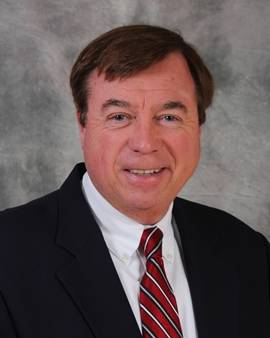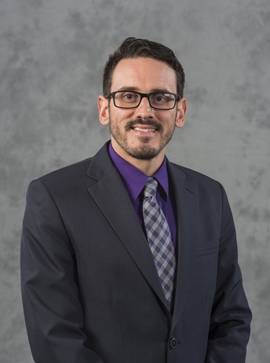- Private practices across the nation are planning ahead for a steady rebound to optimal patient volumes by the end of the summer.
- While the first wave of COVID-19 infections persists, practice leaders are volunteering for pay cuts, deferring bonuses, and shifting vacation time to protect staff financially.
- To bridge challenging financial gaps, independent practices may wish to explore applying for a Small Busi-ness Administration loan.
Although some intrepid radiologists have entered the front lines of the COVID-19 wards (see the “Answering the Call” Imaging 3.0 case study), seeking to lend their expertise where they could, most imaging professionals have had to decrease their involvement in patient care. For private-practice radiologists in particular, this resulted in rescheduling many imaging exams, indefinitely postponing others, and planning ahead to keep their businesses afloat through an uncertain time.
Delaying Care
“Our independent, private practice has been in existence since 1904,” states Samir B. Patel, MD, FACR, diagnostic radiologist, value management program founder, and executive board member at Radiology, Inc., a private radiology practice in Mishawaka, Indiana. “The practice has endured the flu pandemic of 1918, the Great Depression, multiple recessions, a spinal fungal meningitis epidemic in 2012, and two world wars. Prior challenges were successfully navigated through resilience and strong leadership, which we are confident will lead us past this pandemic.” Samir B. Patel, MD, FACR, value management program founder and executive board member at Radiology, Inc., in Mishawaka, Indiana, notes that his group has successfully navigated past challenges through resilience and strong leadership. |
“Overall, our imaging volume is down about 45%,” Patel explained at the time. “We have not rescheduled screening exams, electing instead to suspend them indefinitely. This is because it is difficult to predict if volume levels will remain normal because of multiple variables. Other exams will be rescheduled in accordance with individual sites’ global response plans, which include imaging and non-imaging procedures.” Beyond this, Patel notes, radiologists are reviewing previously scheduled outpatient imaging exams to determine their urgency. If delaying an exam would negatively impact a patient, typically determined after direct communication with the ordering provider, the procedure would be performed as scheduled.
When it comes to rescheduling exams, many practices across the country are aimed to ramp up appointments once newly diagnosed COVID-19 cases began to decline. Robert S. Pyatt Jr., MD, FACR, past chair of Chambersburg Imaging Associates, an 11-person group in south-central Pennsylvania, and chair of the radiology department at Wellspan-Summit Hospitals, anticipates a return to normalcy in the early summer. “In our county, COVID-19 cases are increasing to some degree,” notes Pyatt, who is also chair of the ACR’s Commission on General, Small, Emergency, and/or Rural Practice. “But we are hoping the statewide stay-at-home orders will be lifted by early June.”
Although the majority of Chambersburg Imaging Associates’ routine procedures have been rescheduled, Pyatt anticipates that some rescheduled patients may be reluctant to return until they feel that the crisis is truly over, which may push back their appointments even further. Because of this reality, Pyatt sees his group’s approach as a phased-in return to normalcy. “It will take a majority of patients some time to feel that it is safe enough to return,” notes Pyatt. “The more that radiology practices can assure patients of their return to a safe environment, the better.”
Daniel Ortiz, MD, musculoskeletal and general radiologist at Summit Radiology Services, P.C., a 25-person independent practice in northern Georgia, echoes the merits of this phased-in approach to patient scheduling. “Temporary care delay is completely appropriate and necessary,” states Ortiz, who is immediate past chair of the ACR’s Resident and Fellow Section. “But eventually, we will have to adapt to an intermediate phase, with protections in place that ensure patients can get their routine care.” Ortiz believes that summer makes for a good target to be operating at, or close to, optimum patient volume.
Adjusting Finances
Care delays not only have ripple effects for a patient’s long-term health but also for the ongoing viability of practices of all sorts, particularly private practices. To contend with monetary shortfalls, groups across the nation have adopted a broad array of approaches, from instituting hiring freezes and salary cuts to, in some cases, furloughs and layoffs.
 Robert S. Pyatt Jr., MD, FACR, chair of the radiology department at Wellspan-Summit Hospitals in Chambersburg, Pennsylvania, predicts that some rescheduled patients may be reluctant to return until they feel that the crisis is truly over. |
To smooth out any bumps in the road ahead, the practice leaders at Summit Radiology Services have started at the top when it comes to making sacrifices. “My practice’s partners chose to defer their bonuses and take a base salary cut to preserve the salaries of associates and employees,” explains Ortiz. “This stands in stark contrast to some of my friends in other groups who have experienced up to an 85% salary cut. Given the low volumes and need for fewer radiologists at this time, the partners are being given extra time off, since they took the financial impact.”
As for part-time staff, Pyatt is looking to keep them in-house as well. “We plan to use our part-time radiologists two weeks per month in May and June, and hopefully more in July,” he says. “It would be difficult for them to find new jobs right now given the circumstances, and since we value them as key members of our team, we can provide some income each month.”
Pyatt thinks that although it will take at least a few months for patient volumes to return to form, once the first wave of the COVID-19 pandemic abates, it will have to be all hands on deck. “Our radiologists and staff members are being advised to plan on working longer hours on weekdays and more weekend hours once patients begin returning. With that, there is concern for increased burnout, as less vacation time will likely be allowed during the ramp up.” (Consult ACR’s Radiology Well-Being Program for tips on how to avoid burnout.)
Anticipating Volumes
While some groups are anticipating that patient volumes will rise steadily to meet past levels, others suspect that patients may be slow to return to imaging for a number of reasons, including a loss of health insurance due to unemployment or out of a fear of contracting the illness until a vaccine is approved. If patient volume doesn’t rebound over the next 12 months or more, says Patel, “our practice leaders, with input from all of our team members, would discuss how to right-size the organization.”
Ortiz believes that, although patient volumes might not rise precipitously in June, radiology will remain in a strong position coming out of this first wave of the epidemic. “Our current plan anticipates a return to near-average volumes by balancing the factors driving down volumes, such as a loss of insurance coverage and attendant economic concerns, and those driving them up, such as a backlog of canceled routine cases.”
 Daniel Ortiz, MD, musculoskeletal and general radiologist at Summit Radiology Services, P.C. in northern Georgia and immediate past chair of the ACR’s Resident and Fellow Section, anticipates a return to near-average patient volumes by this summer. |
Bridging the Gap
Beyond internal bookkeeping and reading scans from home, applying for available loans can mean the difference between private practices remaining open and having to close shop. The ACR has posted information on its website about how to apply for a Small Business Administration (SBA) loan to bridge challenging financial gaps. As the ACR website states, the Coronavirus Aid, Relief, and Economic Security (CARES) Act revised eligibility criteria, allowable uses, and other considerations to make SBA’s programs more inclusive, expansive, and useful.
Tim Gutsie, practice manager at Chambersburg Imaging Associates, believes it is worthwhile to explore the details of financial rescue packages. “We applied for and anticipate receiving our SBA loan shortly,” Gutsie says. “At that point, we will be able to pay our part-time radiologists for the next eight weeks.”
And more help could be on the way if radiologists are allowed to begin billing for evaluation and management services, as ACR has been advocating. In a recent letter to the Centers for Medicare & Medicaid Services, William T. Thorwarth Jr., MD, FACR, ACR chief executive officer, requested that radiologists be granted more authority as “treating physicians.” If approved, such a move could put radiologists on equal footing with primary care physicians and other specialists, thereby allowing them to take on a larger role in patient care.
As Patel sees it, the approach could improve the standing of radiologists, making them even more crucial members of coordinated care teams. “Allowing radiologists to successfully bill for evaluation and management services, along with ordering exams in the outpatient setting through direct patient consultation, would enhance our visibility, increase our accessibility, and decrease the burden on primary care providers,” Patel says. Pyatt agrees: “The more that interested radiologists can help fill gaps as treating physicians, the more it could help our specialty in many ways, including some potential degree of financial benefit.”
Looking Ahead
Whether or not radiology’s responsibilities expand during this pandemic, ensuring that patients are at the forefront of all decisions and cultivating a strong, empathetic work culture are both of supreme importance. “It’s imperative to maintain a longer horizon view that we’ll get through this together,” suggests Pyatt. “Communicate often and work as a team. Every time I talk with staff, I ask how they are doing. I know every one of my staff and want them to know that I care about their safety and their important work for our patients, as well as for their families’ safety at home. If you communicate well,” Pyatt concludes, “the group will be happier overall, and that will translate to quality patient care and future success for the group.”
Creative Commons
Crisis Management by American College of Radiology is licensed under a Creative Commons Attribution-NonCommercial-NoDerivatives 4.0 International License. Based on a work at www.acr.org/imaging3 . Permissions beyond the scope of this license may be available at www.acr.org/Legal.Share Your Story
Have a case study idea you’d like to share with the radiology community? To submit your idea, please click here.Next Steps
- If you are a practice leader, consider protecting your full-time staff financially by deferring bonuses or exchanging a reduction in pay for perks, such as extended vacation time or pension funding opportunities.
- Work closely with your practice’s business manager to apply for and secure financial relief, such as from an SBA loan.
- Prepare staff for intermittent periods of working extended hours both during the week and on weekends once patient volumes resume, making sure to explore strategies for mitigating physician and staff burnout.
Author
Chris Hobson, Imaging 3.0 Senior Communications Manager
Join the Discussion

#Imaging3 on Twitter
Call for Case Studies
